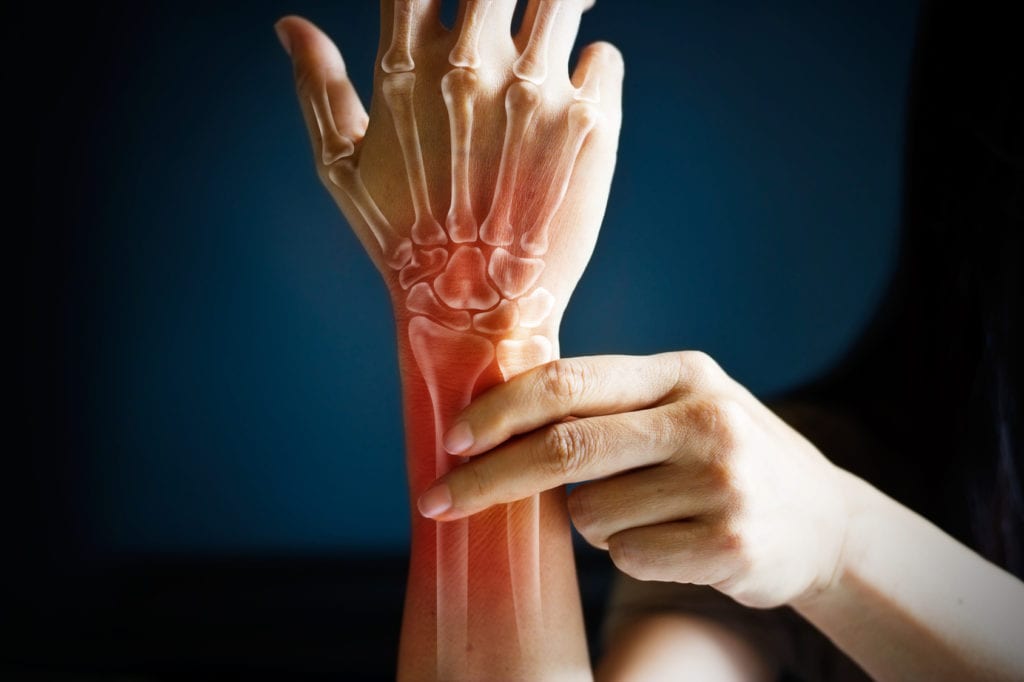Everyone suffers from various pains from time to time – pain is a human thing, and it’s biologically and evolutionally important, as it is meant to signal danger or injury. However, if the pain is severe, persistent or it doesn’t have any apparent reason, this should be an alert. One of the most inconvenient and hurting, but common pain syndromes is the Complex Regional Pain Syndrome (CRPS). It can be really burdensome and can affect day-to-day life. What exactly is CRPS and what are the causes of it?
What is Complex regional pain syndrome?
Complex Regional Pain Syndrome is chronic pain in one limb (leg, arm, hand, foot) which lasts longer than half a year. It is normally caused by an injury but persists longer than the injury itself. This syndrome can be divided into two types: type I (CPRS I) and type II (CPRS II). Type I involves cases where the actual nerve injury has not been confirmed, while patients with type II did suffer from an injury.
There is no scientific data that would confirm the exact risk factors, such as age or gender. Nevertheless, it is thought to be more common in women, and the risk of CPRS gets higher with age, so people in their forties may consider themselves at risk. Meanwhile, there are few cases confirmed in children.
CPRS can be treated with various methods, for example, medication, rehabilitation, or even psychotherapy. If you look for new scientific treatment solutions, have a look at thesperoclinic.com.
What are the symptoms of CPRS?
Although the CPRS symptoms may vary, as they are strongly individual, there are some common things. The major sign is chronic pain, especially in one of the limbs, that is either a prolonged result of an injury or occurs with no apparent reason. Apart from the pain in the area, a patient may experience excessive sensitivity of the limb. Other symptoms may include the change in skin temperature or color, as well as swelling. There are also less common signs of CPRS and they may include:
- muscle problems (pain, decreased muscle strength in the area);
- problems with coordinating the movement of the limb;
- joint stiffness and swelling;
- changes in the skin texture on the limb.
If you notice any of these symptoms and they are accompanied by chronic pain, don’t hesitate to contact the doctor in order to get diagnosed. To read more about the process and criteria of CRPS diagnosis, have a look here.
What causes Complex regional pain syndrome?
As mentioned before, in some of the cases, CRPS results from injuries, for example, sprains (in case of a knee, wrist, or ankle), but also burnings and medical surgeries. Sometimes even a small injury can trigger the CRPS symptoms – it’s a highly individual issue. As a result of the injury, the nerves in the affected area convey the ‘wrong’ message of pain to blood vessels and brain and that’s why it persists.
There are cases, however, in which there’s no reason for this syndrome – a patient has not suffered from any injury or hasn’t had any surgical inference. Then, the CPRS may result from the internal injury within the limb, such as blood vessel problems. Very often, the inner injury is combined with a mechanical one, so the treatment methods need to be adjusted to both types.
Rarely, Complex Regional Pain Syndrome may result from some genetic changes. If there is no external or internal injury in the affected area, it may be necessary to look for the cause int the field of genetics.
How to treat CRPS?
After being diagnosed, it’s necessary to introduce some treatment for CRPS. Most commonly, it includes three components: medication, rehabilitation, and psychotherapy. The last element is not essential, though, but in many cases, it turns out to be helpful.
The medications that are used in the treatment normally include anti-inflammatory drugs that soothe the pain or – in more severe cases – opioids such as morphine. Some patients decide to take botulinum toxin injections or use local anesthetic creams that are applied directly to the skin.
Rehabilitation in CRPS is aimed at improving the limb’s flexibility, mobility, and strength. The exercise plan must be personalized and adjusted to the patients’ individual needs and abilities.
Psychotherapy may turn out to be a necessary element in the CRPS treatment. Experiencing chronic pain may have a negative influence on mental health, so the patients with this syndrome may be advised to think about psychologists’ or psychiatrists’ consultation. To read more about the influence of psychotherapy on chronic pain, read this article.
Conclusion
If you suffer from continuous pain that has no apparent reason or persists too long as a result of a minor injury, it may be a sign of CRPS. When not treated, it may have severe and unpleasant symptoms as well as serious health repercussions, so it’s good to diagnose it and introduce a proper therapy. Chances are that the symptoms will be reduced and eliminated completely.












